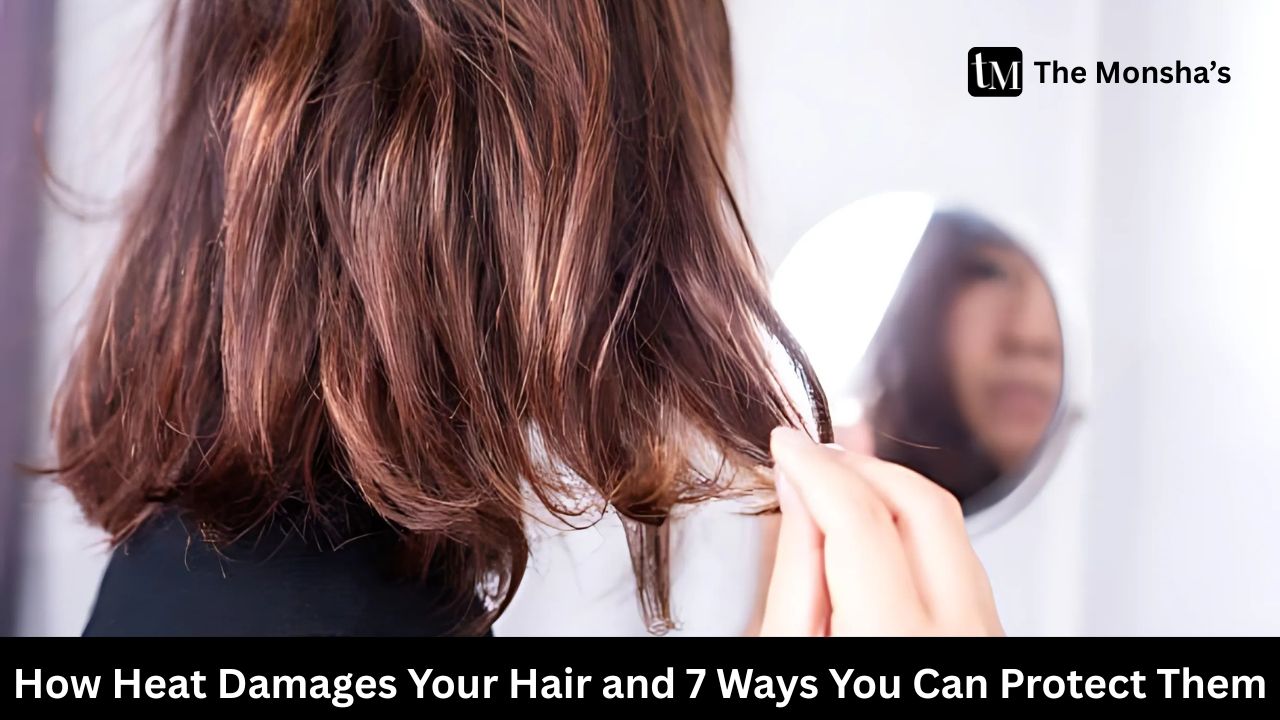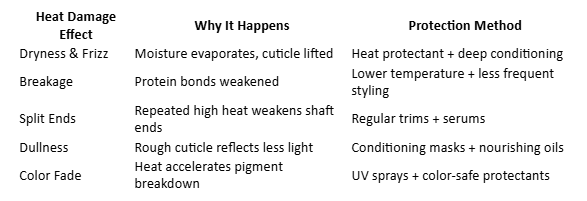
Here’s the deal: we love our straighteners, curlers, and blow dryers. They give us that instant “I tried today” look when in reality we’ve got five minutes before running out the door. But the truth is, every pass of a hot tool is secretly breaking your hair’s trust. Think of it like toxic dating: looks good on the outside, but the damage piles up underneath until one day you’re left with split ends and tears in the shower.
According to trichologists, heat exposure above 150–160°C can start lifting the cuticle layer and pulling moisture straight out of the cortex. In plain English? Your hair goes from shiny and elastic to brittle and frizzy. A study in the International Journal of Cosmetic Science even highlighted that repeated heat exposure breaks down keratin bonds, reducing strength and elasticity over time. Ouch.
Hair isn’t just “dead cells” — it’s made up of keratin protein, layered cuticles, and natural lipids that keep strands smooth. Heat styling attacks this structure in three ways:
Over time? You’ll see dullness, split ends, and hair that snaps like overcooked spaghetti.
If this sounds familiar… yep, the damage is already here.
This is your SPF for hair. Formulas with silicones, polymers, or even hydrolyzed proteins coat strands and slow down heat penetration. Studies show heat protectants can reduce cuticle cracking and moisture loss by forming a thermal shield. Pro tip: spray evenly, comb through, then style.
Not every strand needs 230°C to curl. In fact, fine hair can style at 150–170°C. Thick hair? Sure, bump it up slightly, but never max out. The key is slow, controlled passes at lower heat rather than frying your hair in one go.
That sizzling sound when you hit damp strands? That’s literally water boiling inside the shaft, causing tiny bubbles and breakage. Always rough-dry or air-dry at least 80% before using hot tools.
If you’re straightening every single morning, don’t be surprised when your ends revolt. Rotate with heatless styling hacks — overnight braids for waves, flexi rods, or even the old-school sock bun trick for curls.
Weekly hair masks with keratin, shea butter, or ceramides help replace lost moisture and smooth raised cuticles. Oils like argan or coconut can penetrate the shaft and restore lipids stripped by heat.
Sorry, no serum can glue a split end back together. Trimming every 6–8 weeks stops splits from creeping up and keeps hair looking healthy even if you style often.
UV protection sprays, silk scarves, or hats are underrated but powerful. Studies show prolonged sun exposure damages the cuticle as much as blow-dryers. Treat sunlight like a styling tool — guard against it.
If you really want healthier hair, explore heatless options:
Heatless doesn’t mean boring; it means creative.

Q: Can I repair heat-damaged hair fully?Not exactly. You can improve appearance with masks and serums, but real repair only comes with trims and prevention.
Q: Are expensive tools better?Yes — quality tools distribute heat evenly and many have ceramic or tourmaline plates to minimize hot spots. Cheaper irons often fry some areas while leaving others untouched.
Q: How often is safe to style?Limit to 1–2 times a week max with full protection in place.
Heat styling is like dessert: amazing in moderation, regretful in excess. Your hair doesn’t have to give up curls or sleekness forever — you just have to style smarter. Invest in a protectant, keep the temperature sane, and treat your strands with as much love as you treat your skincare. Trust me, your hair will thank you with shine, bounce, and fewer dramatic breakdowns in front of the bathroom mirror.